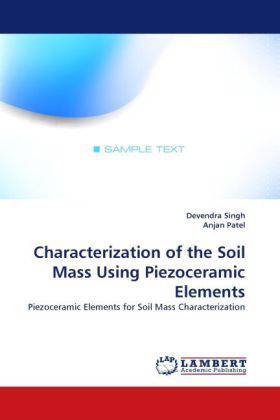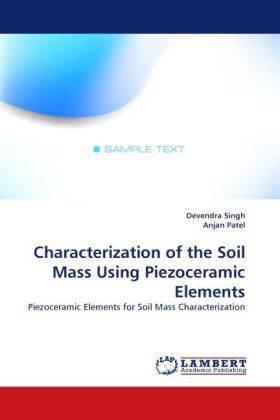
- Afhalen na 1 uur in een winkel met voorraad
- Gratis thuislevering in België vanaf € 30
- Ruim aanbod met 7 miljoen producten
- Afhalen na 1 uur in een winkel met voorraad
- Gratis thuislevering in België vanaf € 30
- Ruim aanbod met 7 miljoen producten
Zoeken
Characterization of the Soil Mass Using Piezoceramic Elements
Piezoceramic Elements for Soil Mass Characterization
Devendra Singh, Anjan Patel
Paperback | Engels
€ 48,45
+ 96 punten
Omschrijving
Shear and compression wave velocities have been demonstrated to be quite useful for determining basic engineering properties of the soil mass by earlier researchers. To achieve this, resonant column, cyclic triaxial and tortional shear tests have been employed. However, these methods are not only quite elaborate and expensive but require skilled manpower, are cumbersome and time consuming. This calls for development of an alternate methodology that can be employed for characterizing the soil mass, which is not very intricate and is cost-effective. In this situation, usage of piezoceramic elements seems to be a good option. With this in view, an attempt has been made to develop a simple and cost-effective methodology for measuring these parameters in different types of soils, compacted to different compaction states. The suitability of the methodology has been demonstrated for characterization of the soil mass for engineering purpose.
Specificaties
Betrokkenen
- Auteur(s):
- Uitgeverij:
Inhoud
- Aantal bladzijden:
- 108
- Taal:
- Engels
Eigenschappen
- Productcode (EAN):
- 9783843377317
- Verschijningsdatum:
- 20/12/2010
- Uitvoering:
- Paperback
- Afmetingen:
- 152 mm x 229 mm
- Gewicht:
- 168 g

Alleen bij Standaard Boekhandel
+ 96 punten op je klantenkaart van Standaard Boekhandel
Beoordelingen
We publiceren alleen reviews die voldoen aan de voorwaarden voor reviews. Bekijk onze voorwaarden voor reviews.











